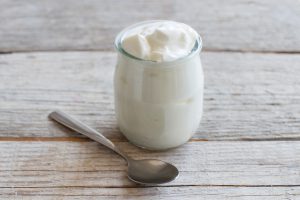
Angela Emmerton is someone who knows how sugar can make you sick – and just how sick. Within her practice, Angela sees poor health and the onset of chronic disease weekly; a diet high in sugar is, more often than not, the leading culprit.
If sugar were so easy to ditch, we’d all just clean out the kitchen, throw out the chocolate bars, biscuits and soft drink and eat healthy, sugar-free foods. So…why don’t we do that then?
Well, the truth is – sugar gets us hooked! Just seeing something sweet like chocolate cake, for example, is a trigger for the brain to release the chemical dopamine. It’s a reaction that’s been around since the primordial slime – well, not quite – but certainly back when sweet-tasting foods were rare.
Spotting something sweet was a ‘cue’. Our brains told us to go after it, because we needed it for energy. But that’s only half the story. Once we taste a sweet item, even more chemicals are released, opioids and beta-endorphins. And guess what? We feel terrific!
Sugar causes the reward centres of our brains to be flooded with good feelings. The research shows sugar lights up the same reward areas as nicotine, cocaine and sex. If you’ve ever tried to quit smoking, you’ll know just how hard it is. But we all need food, right? Why would we break up with this sweet thing that makes us feel so good?
Today, we live in a world that’s literally full of ‘sweet cues’. Everywhere we look there are billboards, TV, radio and print ads, and more, enticing us to consume sugary drinks, delicious ice-creams, chocolates and cakes. It’s almost impossible to get through a single day without being influenced by these triggers. So don’t be too tough on yourself; temptation is everywhere.
I’ve put together a simple strategy you can implement into your own life which will allow you to keep the sugar addiction under control. The more you practice the better you’ll get, and your body will thank you for it.
Try my five simple tips to help you beat those sugar cravings. Reduce the amount of sugar in your diet and watch your quality of life improve as well as your skin and your waistline.

Cinnamon
Cinnamon has a long history as an anti-diabetic spice. It contains anti-hyperglycemic properties and has the potential to reduce blood glucose levels.1
An easy way to start using cinnamon is to substitute it for sugar in tea or coffee. If you’re the adventurous type, you can even place a cinnamon stick in hot water and enjoy it as a replacement for a cup of tea.
Other options include adding it to your morning porridge, smoothie, or sprinkling it on top of yoghurt. The slightly sweet smell always reminds me of an English christmas and my childhood memories of growing up there.
Simple snacks
So you’re starving and you can grab a ten-minute break. Either you had no time to pack lunch, or the fridge or pantry were bare when you left for work. It happens, even to me! However, being prepared is the trick to avoiding the quick sugar fix.
Once you enter the food-court or local cafe, your chances of locating a sugar-free – not to mention healthy – lunch or snack are significantly diminished. Add long queues, limited time and budget restraints to the mix, and that muffin is starting to tick all the right boxes. Get ready for a full sugar ride to get through the day!

The best way to avoid this situation is not to leave home without a healthy snack in your bag. My suggestions for easy transportable snacks include:
- a handful of nuts
- a couple of boiled eggs
- a crispy (preferably organic) apple / other favourite fruit (pear, mandarin etc.)
- a small tub of yoghurt (you can add a few berries)
- some hummus (or dip of your choice) and carrot / celery sticks or;
- a couple of crackers and piece of cheese
Throw in a few cherry tomatoes and a handful of spinach, and you’ve got yourself an excellent healthy lunch or snack, which will keep you satiated. You’ll also be feeling and looking better!
If you think about it, these snacks take no time to prepare at all, just add the ingredients to your shopping list, whizz up a dip, and boil a few eggs in advance. The trick is to then get into the habit of grabbing one of two of these items before you leave home – and don’t forget your water bottle.
Coconut cookies
Keep finding your hand in the cookie jar at work for an instant boost? Why not empty it out and replace it with some crunchy toasted coconut?
Shredded or flaked coconut straight from the bag tastes good, but personally I find it a bit chewy. I prefer coconut with a crisp texture, which you can achieve by toasting it. This caramelises it, bringing out a richer, nuttier, sweet flavour.
There are two techniques for toasting coconut. You can use the stovetop or the oven. I simply heat the oven to 180 degrees, spread the coconut on a baking tray, toast the coconut shreds in the oven for a few minutes until they’re lightly browned, and pop them in a jar for delicious quick snacks, anytime of the day.

Sweet saviours
Fruit is naturally sweet and comes wrapped in fibre – so much better than juices. What’s more it comes full of an array of phytonutrients, known to have positive health benefits. Eating fruit is a great way to help ease sugar cravings, especially when you’re looking to reduce your intake…. who doesn’t enjoy the sweetness of a fresh strawberry?
I’m a big fan of berries – in particular, blueberries and raspberries. I’m constantly amazed at the big punch these little guys pack in terms of disease-fighting antioxidants. Add a handful to yoghurt, porridge or a smoothie to help prevent and repair against oxidative cell damage and free radicals. Berries are portable, easy, and require no preparation; they are nature’s fast food.
If you have a sugar intolerance or diabetes, you will of course, need to adjust your intake as recommended by your doctor.
Chomp on chromium
One of chromium’s key roles in the body is to regulate blood sugar levels. This can really help with sugar cravings. Chromium can be found in an array of foods, some of the highest being broccoli, barley, oats, green beans and tomatoes. So add one of two of these to your daily diet to help keep your sugar levels balanced.
The normal dietary intake of chromium is often suboptimal. There’s also evidence of chromium deficiency leading to abnormally high blood sugar levels. 2 It has also been reported that chromium can increase lean body mass and decrease body fat percentage. However, this is alongside a healthy lifestyle, including movement and diet.
I hope you find these tips helpful on your journey to reducing your sugar intake. Remember, the World Health Organisation (WHO) recommends a daily intake of six teaspoons of sugar, a healthy number to work towards.
Angela Emmerton takes a practical approach to nutrition, aiming to educate and inspire with practical solutions. Her work is focused on helping people manage their health effectively with comprehensive nutritional consultations and treatment plans, guiding them to long-term sustainable health and wellbeing. If you’re interested in working with Angela, please contact us at info@paradigmswitch.com.au or visit www.paradigmswitch.com.au
References

